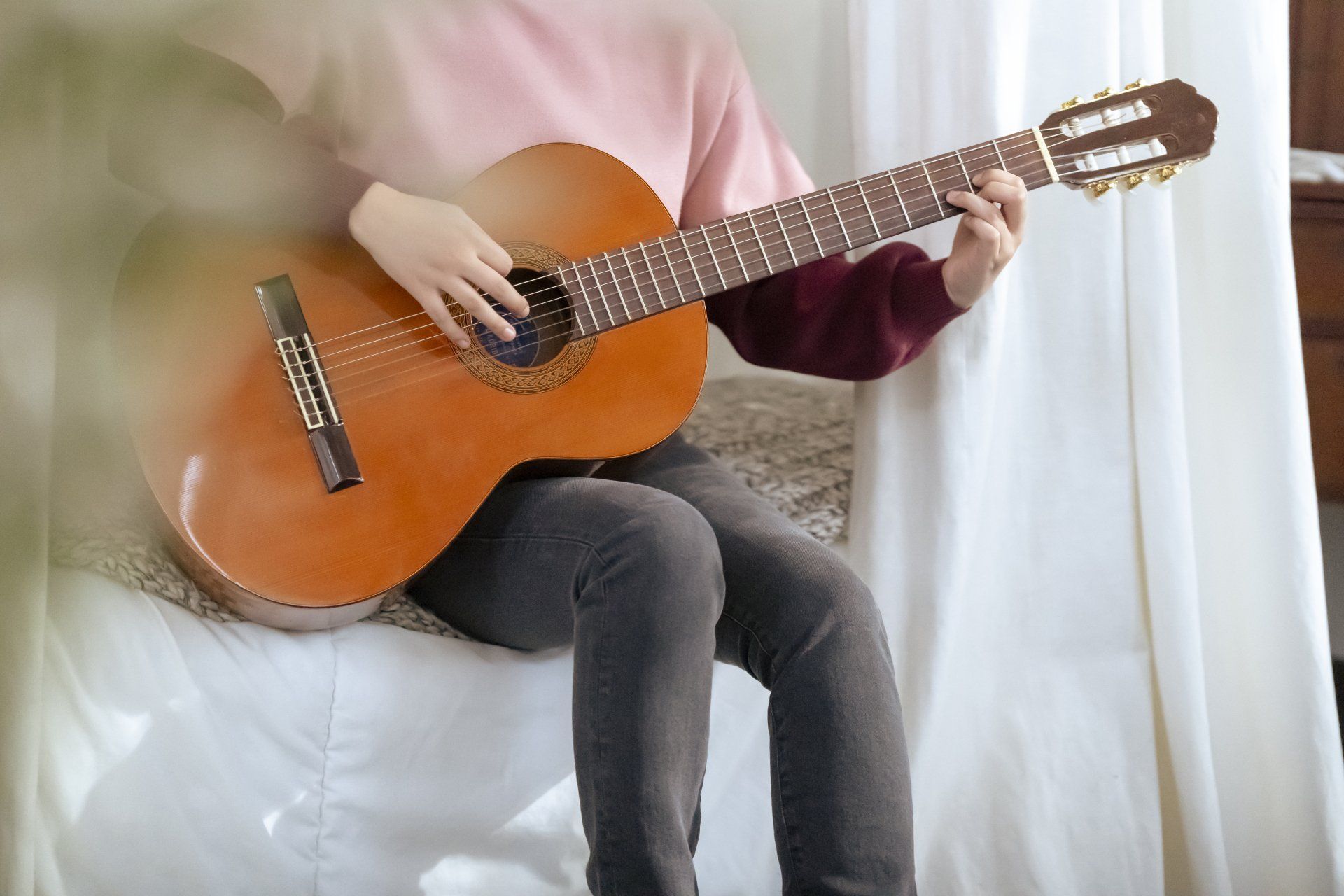
Nothing comes for free when you decide that you want to do something well. Becoming a good guitar player follows the same logic. One of the first lessons you should do is to learn the basic chords on the guitar. Some call them "cowboy" chords or "open string" chords. Well, what's a chord? Depending on who you talk with, a chord can be any two or three different notes played together. For example, the piano and the guitar are both rhythm and melody instruments. You can play any two or three notes anywhere on a piano, and they will have a named structure. The same concept is true for the guitar. However, some notes played together sound better than others. Chords come from notes that come from specific keys. A key is a group of seven notes played in a scale. Choosing notes in a scale, determines the name of the chord.
The basic chords on guitar (and the piano) are called "major" and "minor". Each chord can also add other notes like sevenths, which give the chord a more appealing sound. For example, if I say the name of the chord is "G", that means it is a "G major" chord. If I say "G7", this means an additional note is added to the original G chord, giving it a new name, "G7". There are many variations and structures to build chords on the guitar. Cowboy or Open string chords generally use one or more of the open strings on the guitar in the chord structure. For example, the most common open string "G" chord uses two open 3rd and 4th strings in the chord. If you play the common open string "C" chord, it uses the open 3rd and 1st strings. Open string chords allow beginner guitar players to slowly learn how to play these chords and change them clearly in rhythm. Over time, the hand builds strength and muscle memory for each of the chords. The idea is to learn as many chords as possible by building your chord vocabulary. This vocabulary will grow as you learn how to play songs.
The most common myth about learning how to play the guitar is to learn one song at a time. When you're starting out, this is okay for the first few songs. Once you begin to get used to playing chords and building your chord vocabulary, adding more songs becomes easier. However, it is not necessary to learn a complete song before moving on to another song. It is easier to learn pieces of several songs as a group. This way, each song will teach you something new that you can use to learn other songs that are similar in structure and progression. After you've learned how to play twenty or thirty songs, you will see that you chord vocabulary has increased significantly. You can then use that knowledge to learn tens of thousands of other songs that use the same chords.
Always practice changing your chords clearly in rhythm by playing along with the songs you are learning or by using a metronome or drum machine. Always remember, when you practice with a song, make sure that your guitar is lower in volume than the music source (i.e. stereo, headphones, radio, etc.). You want to be able to hear the song over your guitar while maintaining a balance between both. You are following the song. It is not following you.

